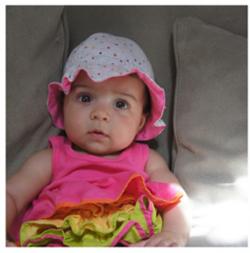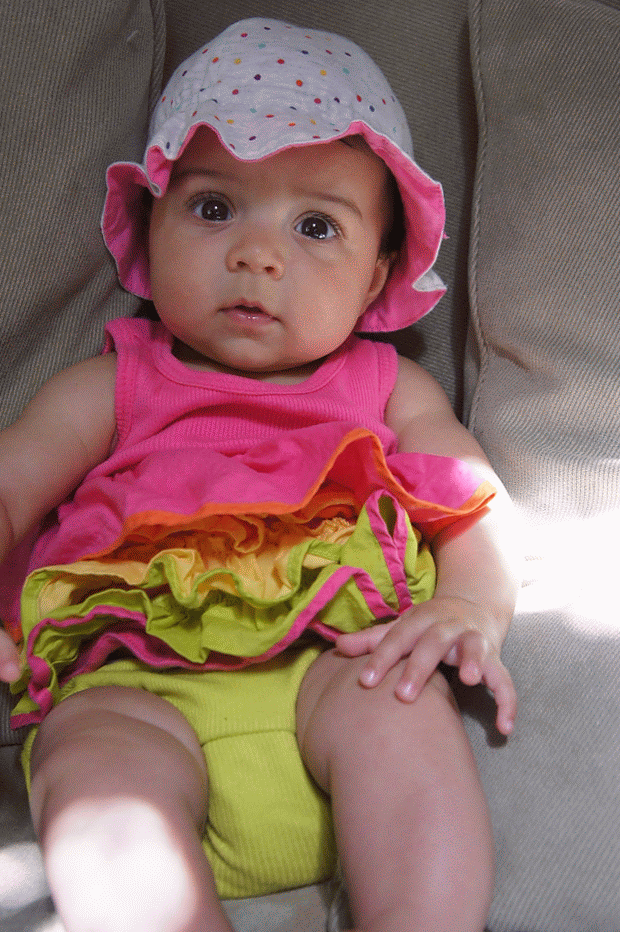I Have Discovered the Purpose of Google Plus!
It’s not social networking. It’s photographs.

Courtesy of Farhad Manjoo
For a year or two in the early aughts, Flickr was every photographer’s favorite corner of the Internet. Not only was it the friendliest, prettiest, most useful and accessible place to store your images; it was also a thriving community. Flickr’s inventors understood what its users wanted, and its users cheered on the creators. It was a place where everyone felt they had a stake in building a novel way for people to share their creativity online.
Then, in 2005, as Mat Honan succinctly described it, “Yahoo bought it and murdered it and screwed itself out of relevance along the way.” Now Marissa Mayer, Yahoo’s new-ish CEO, is trying to resuscitate the victim. Two months ago, she unveiled a bold upgrade to Flickr. The new site offers a stylish design as well as something truly groundbreaking: 1 terabyte of storage space for every user, completely free. A terabyte is 1,000 gigabytes, or about 70 times more space than any other online service has ever offered for free. It’s enough space to completely upend how we think about storage online.
It has long been reasonable to assume that our gadgets will always have more storage than you can get for free online. You think of your computer as your home base for data, and sharing sites like Flickr as a place for just the best stuff that you want to show off to the world. But now Flickr offers more space than you’ll find on many gadgets. Consider that Microsoft’s upcoming $500 gaming console, the Xbox One, comes with only 500 GB of free space, while Apple’s new MacBook Air tops out at 256 GB. If Flickr’s rivals move to match its capacity, the Web will become something more than auxiliary storage—it could become the home base for all your stuff, both the pictures you want to share and those you don’t, so that your images are always available wherever and whenever you want to show them off.
That’s Flickr’s promise, at least. But that’s not what it actually achieves. Despite its new look and huge capacity, Flickr is still a photo service from the past. It lacks key features available on other sites, including useful mobile and desktop apps, the ability to organize and enhance your pictures automatically, and useful social-networking additions like facial recognition. I’ve spent the last couple months testing the new Flickr against some of its rivals, and while I like what Mayer has done to the site, I still can’t recommend it as the go-to place for all your photos.
But I did find another site that could be a great storage space for your pictures. In fact, this service is the simplest, most feature-packed, and most accessible photo site on the Web. You’ll find it useful whether you use a Mac or a PC, an Android or an iPhone—and if you use a mix of all of those devices, it’s by far the best photo-storage and sharing site you could choose. Here’s the big surprise: The world’s best photo site is called Google Plus.
As a social network, Google Plus never really took off. It has hundreds of millions of “active users,” but a lot of that activity is just people using Google’s other services (like Gmail). Far fewer people use Google Plus the way they use Facebook, as a place to catch up and share stuff with friends. (Google Reader, the RSS app that Google just killed off, generated more traffic across the Web than Google Plus did.) Still, Google has poured a lot of money and time into the site, and it’s determined not to let that effort go to waste. Almost two years ago, I predicted that Google would soon kill off the network, although now that prediction is looking pretty shaky. While Google has failed to turn its network into a place to catch up with your friends—because your friends are on Facebook—it has turned it into an amazing place for pictures.
Here’s what’s so great about Google Plus for images. First, Google has created a set of fantastic apps for all your devices. On Macs and PCs, Google Plus connects with Picasa, which is the best photo-storage program you can find anywhere. Picasa is faster than iPhoto, it’s got a slate of simple and powerful photo-editing tools, and it includes an uncannily accurate facial-recognition feature that makes organizing your pictures a breeze. Want to see all your photos of your daughter, from birth through preschool? Easy: Picasa has arranged them all for you, by face. You can set Picasa to sync with Google Plus, so that whenever you make a change to a photo on your desktop, it gets reflected online, too. Google Plus’ iPhone and Android apps are similarly comprehensive. Their best feature is auto backup—if you turn this on, any picture you take on your phone will automatically upload to Google Plus. (These pictures are private, visible only to you unless you choose to share them. In general, Google Plus’ privacy features are much simpler than Facebook’s, so pictures you put there are less likely to go places you don’t like. But of course, if there are photos that you would never want to share, don’t put them anywhere online.)
On Google Plus, every photo gets better, and your entire stash becomes easier to navigate. When you upload a picture, you have the option to run it through a battery of image-processing tools that slightly improve the color, tone, and saturation. It also applies simple, common-sense fixes like properly rotating your pictures so the vertical ones are vertical and the horizontal ones are horizontal. (Flickr doesn’t do even this basic thing; a lot of pictures I uploaded appeared sideways.) Google Plus will also create new composites images out of pictures you’ve uploaded—collages, animated GIFs, and panoramas built out of your snapshots. This sounded totally gimmicky to me, but then I saw what it did to pictures of my kids and I was enthralled. See this collage it made out of a few snapshots of my baby daughter Samara:

And look at this animated gif:

By themselves, none of the images that make these composites are so great—the baby isn’t smiling in many of them, a few are blurry, the lighting isn’t ideal. But together they add up to something adorable and memorable—something more than the jumble of pictures crowding your hard drive.
Finally, unlike Flickr and Facebook, Google Plus skillfully organizes your photos. It lets you scan and search your pictures by date, by album, and by face, syncing with Picasa’s face-recognition system. (Flickr lets you do some of the same things, but I found it much clunkier. To sort images by date, for example, you've got to click the menu, hit “Archives,” and then click on a month—and you don't see any previews of which pictures are available in that month until you click.) Google Plus also has a page called “Highlights” that shows off only your best photos. How does it pick the best ones? There are a lot of data-driven algorithms involved—because this is Google—but the results are so perfect it seems like magic. If you’re constantly finding yourself lost in your mountain of photos, never quite able to sort the great ones from the mediocre, throw them all up on G+ and then peruse the “Highlights” page. You’ll see only your best images—and you’ll start to think of yourself as a better photographer than you’d ever suspected.
Google Plus does have one major disadvantage compared to Flickr: capacity. The site offers you unlimited space for photos at “standard size”—2,048 pixels at the widest, which is the resolution of the iPad’s retina display. But if you want to store your photos in their original size (suitable for making prints) Google gives you just 15 GB for free. If you want more space, you’ve got to pay; prices start at $4.99 a month for 100 GB, and Google charges $49.99 per month for the 1 TB that Flickr offers for free.
I suspect that, spurred by competition from Yahoo, Google will lower its prices soon. For now, then, I’d recommend uploading your pictures to Google Plus in standard size, and keeping your full-size images on your hard drive. If you really do need your pictures online in full size—that is, if you’re a professional or semipro photographer—Flickr might be a better choice for you. But for the rest of us—for people drowning in photos we take on every device, photos that we never get around to organizing or editing—Google Plus is the only way to go.